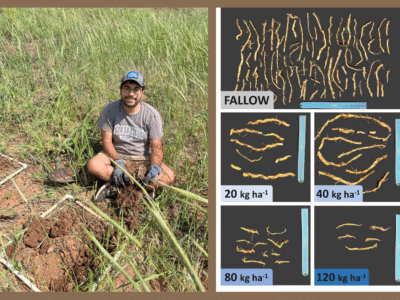Annie Klodd, Penn State University
New research was published by weed scientists in New York, New Hampshire, and Maine that shows how shifting the timing of tillage operations can impact how many weeds, and which species, the field will experience that season.
This data can be communicated as an example on how weed populations differ depending on when fields get tilled. In the Northeast region, the group’s results can also be used by local farmers to better understand how they could potentially manage local weed populations by shifting when they till their fields.

While an increasing number of conventional row crop farmers in the Northeast region are moving away from tillage in favor of no-till systems, organic row crop and vegetable farmers in the region rely on it and other mechanical and cultural tactics for weed management. It is well known that tillage can reduce emerged weeds, as well as prevent weed seeds from germinating. However, it can also stimulate emergence of other weed seeds, by providing the soil disturbance that they need to come to the surface and germinate. Paired with the fact that different weed species emerge at different times throughout the growing season, this means that the timing of tillage events impacts the weed populations in a given field.
For example: Waiting to till until late May, after lambsquarter seedlings have already emerged, will kill any emerged seedlings and lead to a lower population of lambsquarter for the season. In their place, the field would likely be dominated by species that emerge later in the season after the tillage occurs. In contrast, tilling in April (prior to peak lambsquarter emergence in the Northeast) may stimulate higher lambsquarters emergence by bringing buried seeds to the surface and exposing them to light and warmer temperatures.
The Northeast tillage timing study
While we understand these general trends, more specific and regional information is needed on tillage timing for weed management. Additionally, most current research has addressed how weed populations differ depending on whether the field is tilled in the fall or spring. More data is needed on how smaller shifts in tillage timing (like one or several weeks later in the season) will impact weed infestations.
To address this question, the researchers set up plots that were treated the same except that they were tilled on different dates. They did this in four locations: New Hampshire, Maine, and two in New York state.
In all locations, the total amount of weeds during the growing season was higher if the field was tilled earlier rather than later. However, the timing by which tillage would have to be delayed to increase weed management varied a lot by location.
In one of the New York locations, the abundance of weeds dropped substantially if tillage was delayed just two weeks, from May 13 to May 27. This is a promising result, because it shows that in at least some cases, farmers may be able to delay tillage just a couple of weeks to increase weed control, while still having time to plant corn or soybeans.
However, in two of the locations a substantial decrease in weed abundance was only observed if tillage was delayed into the summer, past the point when many fields would be planted into for annual grain crops. However, in these cases they still found differences in the number and type of weed species that grew in the field, depending on how much they delayed tillage. For instance, dandelion and giant foxtail both reacted strongly to tillage timing. Different types of weed species (grasses vs. broadleaves, for example) reacted differently to changes in tillage timing. Some of them emerged more if tillage was delayed, while others decreased in abundance or did not change substantially. So even in these cases, shifting tillage from week to week still impacted the weed community in the field.
Shifting tillage, and thereby shifting the density and types of weeds that are in the field, can help farmers better address those weeds with cultural management tactics or perhaps target certain species of higher concern. This study highlights the importance of considering the timing of tillage into an integrated weed management plan.




























































































